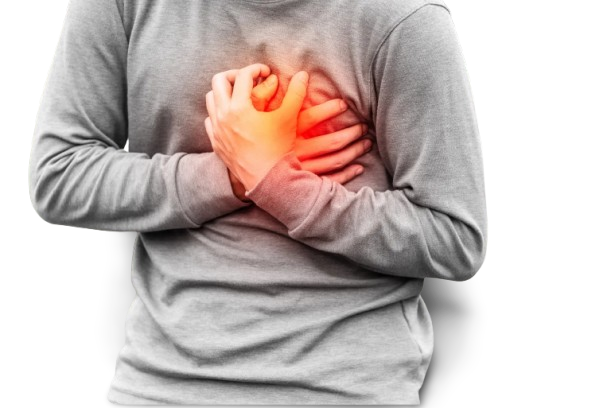Rationale for use
Complications during pregnancy and childbirth are a leading cause of death and disability among women of reproductive age in developing countries. The maternal mortality ratio represents the risk associated with each pregnancy, i.e. the obstetric risk. It is also a MDG indicator.
Definition
Maternal death is the death of a woman while pregnant or within 42 days of termination of pregnancy, irrespective of the duration and site of the pregnancy, from any cause related to or aggravated by the pregnancy or its management but not from accidental or incidental causes. To facilitate the identification of maternal deaths in circumstances in which cause of death attribution is inadequate, a new category has been introduced: Pregnancy-related death is defined as the death of a woman while pregnant or within 42 days of termination of pregnancy, irrespective of the cause of death.
Live birth refers to the complete expulsion or extraction from its mother of a product of conception, irrespective of the duration of the pregnancy, which, after such separation, breathes or shows any other evidence of life - e.g. beating of the heart, pulsation of the umbilical cord or definite movement of voluntary muscles - whether or not the umbilical cord has been cut or the placenta is attached. Each product of such a birth is considered live born
is the annual number of female deaths per 100,000 live births from any cause related to or aggravated by pregnancy or its management (excluding accidental or incidental causes).
South Sudan 2,054.00 2 Chad 1,100.00 3 Somalia 1,000.00 4 Central African Republic 890.00 5 Sierra Leone 890.00 6 Burundi 800.00 7 Guinea-Bissau 790.00 8 Liberia 770.00 9 Sudan 730.00 10 Cameroon 690.00 11 Nigeria 630.00 12 Lesotho 620.00 13 Guinea 610.00 14 Niger 590.00 15 Zimbabwe 570.00 16 Congo, Republic of the 560.00 17 Congo, Democratic Republic of the 540.00 18 Mali 540.00 19 Mauritania 510.00 20 Mozambique 490.00 21 Laos 470.00 22 Afghanistan 460.00 23 Tanzania 460.00 24 Malawi 460.00 25 Angola 450.00 26 Zambia 440.00 27 Cote d'Ivoire 400.00 28 Senegal 370.00 29 Gambia, The 360.00 30 Kenya 360.00 31 Haiti 350.00 32 Ghana 350.00 33 Ethiopia 350.00 34 Benin 350.00 35 Rwanda 340.00 36 Swaziland 320.00 37 Uganda 310.00 38 South Africa 300.00 39 Burkina Faso 300.00 40 Togo 300.00 41 Timor-Leste 300.00 42 Comoros 280.00 43 Guyana 280.00 44 Pakistan 260.00 45 Cambodia 250.00 46 Eritrea 240.00 47 Equatorial Guinea 240.00 48 Madagascar 240.00 49 Bangladesh 240.00 50 Gabon 230.00 51 Papua New Guinea 230.00 52 Indonesia 220.00 53 Namibia 200.00 54 Burma 200.00 55 India 200.00 56 Djibouti 200.00 57 Yemen 200.00 58 Bolivia 190.00 59 Bhutan 180.00 60 Nepal 170.00 61 Botswana 160.00 62 Dominican Republic 150.00 63 Suriname 130.00 64 Guatemala 120.00 65 Jamaica 110.00 66 Tonga 110.00 67 Ecuador 110.00 68 Vanuatu 110.00 69 Honduras 100.00 70 Morocco 100.00 71 Micronesia, Federated States of 100.00 72 Samoa 100.00 73 Paraguay 99.00 74 Philippines 99.00 75 Algeria 97.00 76 Nicaragua 95.00 77 Solomon Islands 93.00 78 Panama 92.00 79 Venezuela 92.00 80 Colombia 92.00 81 El Salvador 81.00 82 Korea, North 81.00 83 Cabo Verde 79.00 84 Argentina 77.00 85 Cuba 73.00 86 Kyrgyzstan 71.00 87 Syria 70.00 88 Sao Tome and Principe 70.00 89 Turkmenistan 67.00 90 Peru 67.00 91 Georgia 67.00 92 Egypt 66.00 93 Tajikistan 65.00 94 Gaza Strip 64.00 95 West Bank 64.00 96 Mongolia 63.00 97 Jordan 63.00 98 Iraq 63.00 99 Mauritius 60.00 100 Maldives 60.00 101 Vietnam 59.00 102 Libya 58.00 103 Brazil 56.00 104 Tunisia 56.00 105 Belize 53.00 106 Barbados 51.00 107 Kazakhstan 51.00 108 Mexico 50.00 109 Saint Vincent and the Grenadines 48.00 110 Thailand 48.00 111 Bahamas, The 47.00 112 Trinidad and Tobago 46.00 113 Azerbaijan 43.00 114 Moldova 41.00 115 Costa Rica 40.00 116 China 37.00 117 Saint Lucia 35.00 118 Sri Lanka 35.00 119 Russia 34.00 120 Latvia 34.00 121 Ukraine 32.00 122 Oman 32.00 123 Armenia 30.00 124 Uruguay 29.00 125 Malaysia 29.00 126 Uzbekistan 28.00 127 Romania 27.00 128 Albania 27.00 129 Fiji 26.00 130 Lebanon 25.00 131 Chile 25.00 132 Brunei 24.00 133 Saudi Arabia 24.00 134 Grenada 24.00 135 Hungary 21.00 136 United States 21.00 137 Iran 21.00 138 Bahrain 20.00 139 Turkey 20.00 140 Puerto Rico 20.00 141 Luxembourg 20.00 142 Croatia 17.00 143 Korea, South 16.00 144 New Zealand 15.00 145 Kuwait 14.00 146 United Arab Emirates 12.00 147 Canada 12.00 148 United Kingdom 12.00 149 Serbia 12.00 150 Slovenia 12.00 151 Denmark 12.00 152 Bulgaria 11.00 153 Macedonia 10.00 154 Cyprus 10.00 155 Kiribati 9.00 156 Belgium 8.00 157 Bosnia and Herzegovina 8.00 158 France 8.00 159 Switzerland 8.00 160 Montenegro 8.00 161 Malta 8.00 162 Portugal 8.00 163 Lithuania 8.00 164 Australia 7.00 165 Germany 7.00 166 Qatar 7.00 167 Norway 7.00 169 Ireland 6.00 170 Spain 6.00 171 Netherlands 6.00 172 Slovakia 6.00 173 Czech Republic 5.00 174 Finland 5.00 175 Poland 5.00 176 Japan 5.00 177 Iceland 5.00 178 Austria 4.00 179 Sweden 4.00 180 Italy 4.00 181 Belarus 4.00 182 Singapore 3.00 183 Greece 3.00 184 Estonia 2.00
Ref:
- the world factbook
- http://www.who.int/healthinfo/statistics/indmaternalmortality/en/









































